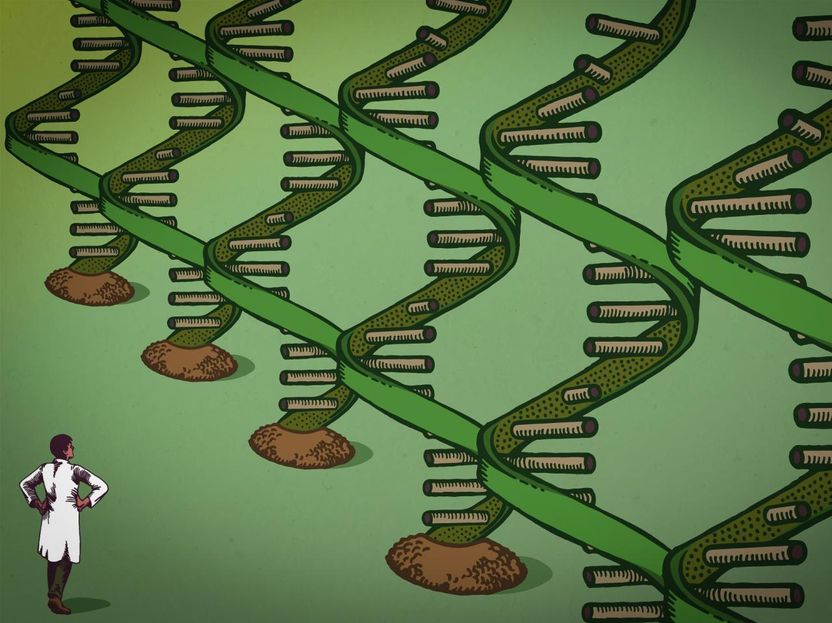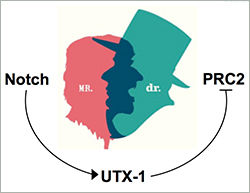The science of fluoride flipping
Advertisement
So much of what happens inside cells to preserve health or cause disease is so small or time-sensitive that researchers are just now getting glimpses of the complexities unfolding in us every minute of the day. UNC School of Medicine researchers have discovered one such complexity -- a previously hidden mode of RNA regulation vital for bacterial defense against toxic fluoride ions.

Scientists are just now beginning to understand the various functions of RNA on human health.
Christ-claude Mowandza-ndinga
The discovery opens a new research avenue for developing drugs that target RNA -- genetic molecules important for various biological processes, including how genes are regulated.
"Much research to find the underpinnings of health and disease has rightfully focused on proteins, but different forms of RNA have functions we're just beginning to understand," said Qi Zhang, PhD, senior author and assistant professor of biochemistry and biophysics. "Our NMR technique is helping us learn more than ever before."
In 2014, Zhang and colleagues developed a new way to use nuclear magnetic resonance (NMR) imaging to show the shape and motion of RNA at the atomic level over time. This was crucial because RNA is often short-lived and sparsely populated in cells at any given time. The amount of RNA changes over short bursts of time depending on which one of its various roles it is fulfilling. Yet, until now, structural biologists have only visualized RNA as a series of snapshots. Zhang's technique enables new ways of visualizing RNA, down to its atoms.
"We need this atomic level view because every atomic interaction is important to human health," said Zhang, who is also a member of the UNC Lineberger Comprehensive Cancer Center. "Scientists have developed similar approaches that work well for proteins and we needed this for RNA, which is crucial for understanding how an RNA serves as a control switch for gene expression."
In their latest work, Zhang and colleagues studied riboswitches - a class of noncoding RNAs that are not translated from DNA into proteins. Rather, riboswitches control gene expression in response to specific cellular cues. Many bacteria rely on these cues and controls to regulate fundamental cellular function. These switches have been important models for the scientific community's basic understanding of RNA architecture and ligands -- molecules such as drug compounds. Riboswitches have emerged as targets for a new class of very much needed antibacterial drugs.
Here's the prevailing wisdom of how these riboswitches work: when a cell produces a metabolite or encounters a toxin to a certain level, a sensor on the riboswitch detects this, reshapes the switch's three-dimensional structure, and sends a signal to turn the responsible gene circuit on or off. This model has been shown in a variety of riboswitches. But when Zhang's group tried to understand how bacteria use a specific class of these genetic switches -- fluoride riboswitches -- to kick start their defense mechanism against a toxic level of fluoride ions, they came upon a mystery.
They first visualized the structure of the fluoride riboswitch when it was unbound to fluoride, and then compared it to the structure of the fluoride-bound riboswitch. To Zhang's surprise, both riboswitches were identical, down to their most intricate interactions. Yet, each version -- bound and unbound -- had a distinct function. The bound state activated gene transcription and turned on the toxicity defense system, whereas the unbound state kept the gene silent.
"We thought, 'how could this be?'" Zhang said. "How could a riboswitch have only one structure but execute two opposite functions? This challenged our basic understanding of the structure-function relationship of RNA. We wondered if nature evolved some special way to fit this unique cellular role of toxicity response. But we also thought something had to distinguish the ligand-bound state of the fluoride riboswitch from the unbound state. Otherwise, how could any of these processes 'know' when to do what?"
This is where the NMR technique came in. Zhang's ability to visualize riboswitches over time allowed his team to reveal the hidden differences in the local motions between the bound and unbound states. Zhang's team found that over the course of a mere three milliseconds, the riboswitch sits in an excited state. This is when it unravels the linchpin - a rare base pair of molecules formed within the riboswitch - to terminate gene transcription. When the fluoride was bound, this super quick process is suppressed and gene transcription is activated again.
Still, Zhang couldn't help but wonder why nature would evolve such an unusual mechanism. He wondered what was the advantage of this strange twist over the typical structural differences between bound and unbound RNA?
"It turns out that encoding this 'hidden' layer of regulation empowers the fluoride riboswitch with an unexpected capability," Zhang said. "This fleeting switch can effectively and efficiently execute ligand-dependent switching across a wide range of speeds of RNA polymerase copying DNA into RNA. This ensures a robust response to fluoride toxicity over diverse cellular environments. This ensures survival."
The discovery marks the first of its kind, and Zhang suspects that this strategy may be used by riboswitches in various toxicity responses and by many other noncoding RNAs for their regulatory functions.
Not only could this work have vast implications for the development of antibiotics, but it provides a new design principle for engineering RNA-based biosensors and nano-devices to probe specific gene expressions and key biological processes to help us understand human disease. It could also be possible to use these RNA nano-devices to interfere with pathological pathways to treat diseases.
"A major challenge in designing effective biosensors and regulators has been ensuring that they can work well across diverse cellular conditions," Zhang said. "This is important because these synthetic devices encounter very different working environments inside different kinds of tissues. So, by unveiling the fluoride riboswitch's 'hidden' molecular strategy, we provide a new way forward, which is very exciting to us and the field."



























































